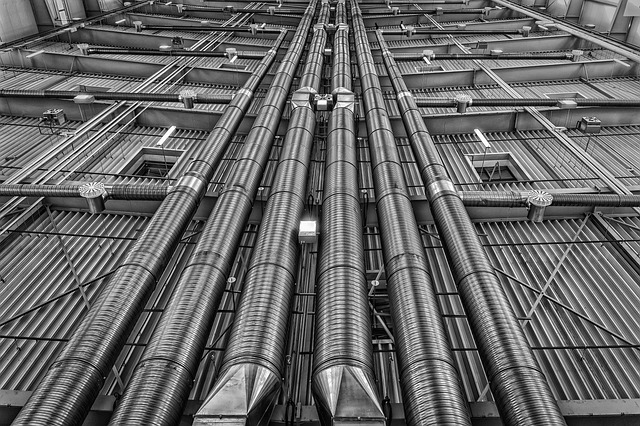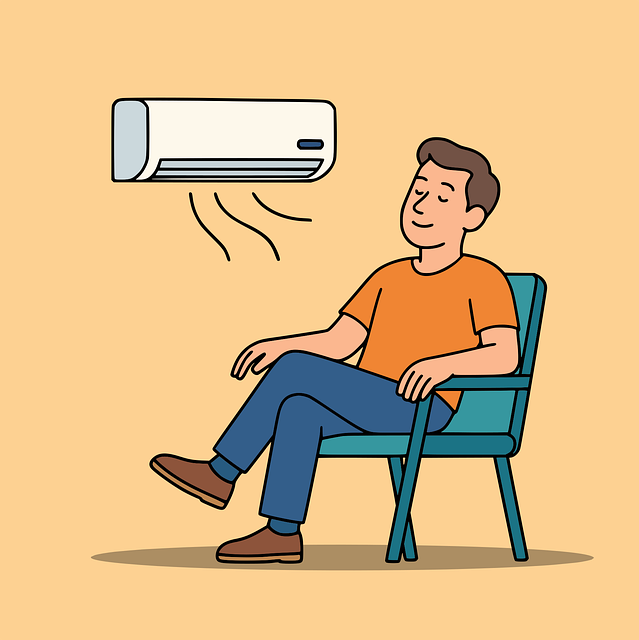Mold contamination in HVAC systems is a significant issue caused by damp, unventilated spaces. It harms indoor air quality, damages components, and poses health risks. To prevent and address this problem, follow these steps: regularly inspect for moisture or odors, fix leaks immediately, clean with detergent and vacuum, sanitize with quaternary ammonium or chlorine solutions, and dry thoroughly. Implement a preventive maintenance plan including regular cleaning, filter changes, humidity control, and annual professional inspections to ensure a healthy living environment and avoid costly repairs.
Discover how to effectively sanitize your HVAC system after mold contamination. This comprehensive guide breaks down the process into manageable steps, ensuring a thorough cleanup and prevention of future issues. From understanding the scope of mold contamination in HVAC systems to implementing effective sanitization techniques, you’ll learn best practices for maintaining a healthy indoor environment. Learn how to prevent recurrences and keep your home or business safe and comfortable.
- Understanding Mold Contamination in HVAC Systems
- Steps to Clean and Sanitize an HVAC System Effectively
- Preventing Future Mold Issues After Cleanup
Understanding Mold Contamination in HVAC Systems

Understanding Mold Contamination in HVAC Systems
Mold contamination in heating, ventilation, and air conditioning (HVAC) systems is a common yet serious issue that requires immediate attention. Mold thrives in dark, damp environments, making indoor spaces with inadequate ventilation particularly susceptible to growth. When left unchecked, mold can not only degrade the quality of indoor air but also cause significant damage to HVAC components. Regular cleaning mold from HVAC systems is crucial for maintaining optimal system performance and ensuring a healthy living environment.
Regular inspection is key in preventing extensive mold contamination. Homeowners should be vigilant about checking for signs of moisture or foul odors, as these could indicate the presence of mold. Upon discovery, it’s important to promptly address the issue by identifying and fixing any leaks or sources of high humidity within the system. Professional cleaning services specializing in HVAC mold removal can also help eliminate existing mold and prevent future growth, ensuring a safer and more efficient indoor climate.
Steps to Clean and Sanitize an HVAC System Effectively

After identifying mold contamination in your HVAC system, taking immediate action is crucial. Start by shutting off the system to prevent further spread. Next, locate and address the source of moisture that allowed mold growth—this could be a leak, high humidity levels, or poor ventilation. Once the underlying issue is resolved, it’s time to clean and sanitize. Begin by removing any accessible mold growth using a solution of water and mild detergent. For hard-to-reach areas, use a vacuum attachment designed for mold removal.
After manual cleaning, disinfect the entire system with a suitable sanitizing agent. Common choices include quaternary ammonium compounds or chlorine solutions, but always follow product instructions carefully. Pay special attention to evaporator coils, condensate pans, and air filters as these are common mold habitats. Finally, ensure thorough drying of all components before restarting your HVAC system. Regular cleaning and maintenance can help prevent future mold issues, so establish a schedule that aligns with your local climate and humidity levels.
Preventing Future Mold Issues After Cleanup

After successfully sanitizing your HVAC system, preventing future mold issues is key. The first step is to identify and address the root cause of the contamination. This often involves improving ventilation, checking for leaks or moisture intrusion, and ensuring proper air circulation throughout your home or building. Regularly cleaning and replacing air filters can also help trap mold spores before they have a chance to grow.
Monitoring humidity levels with a dehumidifier or humidistat is another effective strategy. Maintaining relative humidity between 30% and 50% will make it less hospitable for mold to thrive. Additionally, scheduling professional inspections and cleaning sessions at least annually can catch potential problems early on, preventing them from escalating into costly and health-risking situations again.
